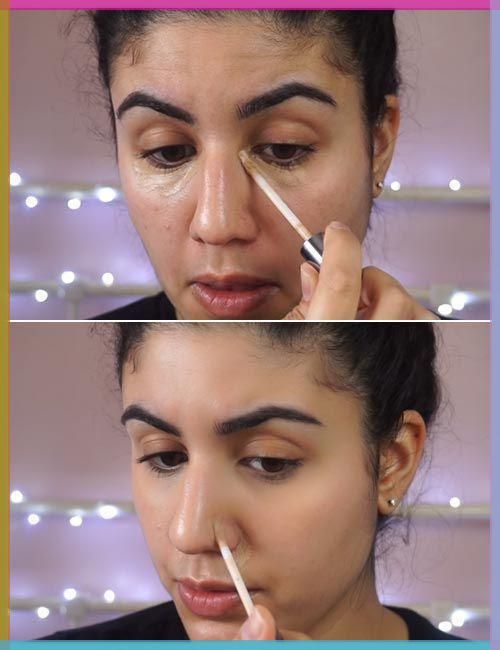
Applying foundation, or base makeup, is a fundamental step in achieving a flawless, smooth complexion. It helps even out the skin tone, cover blemishes, and provides a base for other makeup products. Whether you’re aiming for a natural look or a more polished appearance, here are the steps to apply foundation correctly.
1. Prepare Your Skin
Before applying any makeup, it’s essential to prepare your skin. Cleanse and moisturize to ensure your skin is fresh, hydrated, and smooth. Start by washing your face with a gentle cleanser that suits your skin type. This will remove dirt, oil, and makeup residue from the skin.
Next, apply a moisturizer to hydrate the skin. This helps the foundation glide on smoothly. If you have oily skin, opt for a lightweight, oil-free moisturizer. For dry skin, a richer, hydrating moisturizer is ideal. Don’t forget to apply a sunscreen with SPF if your moisturizer doesn’t already include it, as it helps protect your skin from harmful UV rays.
2. Prime Your Skin
Primer is an optional but highly recommended step in your makeup routine. It creates a smooth surface and helps the foundation adhere better to the skin. Primer also helps to control oil and minimize the appearance of pores.
Choose a primer based on your skin’s needs:
- For dry skin: Use a hydrating or illuminating primer to add moisture.
- For oily skin: A mattifying primer can help control excess shine.
- For large pores: A pore-filling primer works well to smooth out the texture.
Apply a small amount of primer all over your face, concentrating on areas where you have larger pores or where your makeup tends to fade.
3. Choose the Right Foundation
Selecting the right foundation for your skin type and tone is key. There are various types of foundations—liquid, cream, powder, and stick—each offering different finishes and coverage levels.
- Liquid foundation: Ideal for most skin types. It offers buildable coverage and a variety of finishes (matte, dewy, satin).
- Cream foundation: Provides full coverage and is great for dry skin.
- Powder foundation: Best for oily or combination skin, providing a matte finish.
- Stick foundation: Convenient and offers medium to full coverage.
The most crucial factor when choosing foundation is the shade. Test the foundation on your jawline or wrist in natural light to ensure it matches your skin tone. Avoid choosing a foundation that’s too light or dark, as this will create an unnatural appearance.
4. Apply Foundation
There are several tools you can use to apply foundation, including fingers, brushes, and sponges. Each tool has its benefits, and the choice depends on the finish you prefer.
- Fingers: Using your fingers provides a natural, seamless finish. Warm the product between your fingers and apply it directly to your face in small dabs. Blend the foundation evenly with your fingertips.
- Foundation brush: A dense, flat brush provides more coverage and is great for achieving a flawless, airbrushed look. Apply the foundation in a stippling or sweeping motion to blend.
- Makeup sponge (Beauty Blender): A damp sponge creates a dewy, natural finish. Dab the sponge into the foundation, then gently bounce it on your skin to blend the product seamlessly. This method helps to avoid streaks and ensures even coverage.
Start from the center of your face and blend outward. Be careful around the eyes, nose, and jawline. Pay attention to areas that need extra coverage, such as blemishes, redness, or dark spots.
5. Blend the Foundation
Proper blending is essential to avoid harsh lines and achieve a flawless look. After applying foundation, use your tool of choice to blend the product into your skin, ensuring that there are no streaks or uneven patches. Focus on blending along the hairline, jawline, and neck to ensure a seamless transition between your face and neck.
6. Set the Foundation
Once the foundation is applied and blended, it’s important to set it to prevent creasing and fading throughout the day. Use a translucent setting powder to lock the foundation in place.
If you have oily skin, focus on applying the powder to areas prone to shine, such as the T-zone (forehead, nose, and chin). If you have dry skin, apply powder lightly to avoid a cakey appearance. For a dewy finish, you can skip setting powder or use a setting spray to lock in hydration.
7. Touch Up if Needed
After setting the foundation, you can touch up with additional concealer if there are any areas that need extra coverage. Apply the concealer under your eyes, around the nose, or to cover blemishes, and blend it out well.
You can also use bronzer, highlighter, or blush to add dimension and warmth to your face.
8. Finish with a Setting Spray
To ensure your makeup lasts all day, use a setting spray. It helps to lock the makeup in place, giving it a natural finish while preventing it from moving or fading.
Final Thoughts
Achieving a flawless foundation application takes practice and patience, but by following these steps, you’ll be able to achieve a smooth, natural-looking base that enhances your features. Always remember that the key to a great foundation look lies in proper skin preparation, choosing the right products for your skin type, and blending everything seamlessly for a beautiful finish.